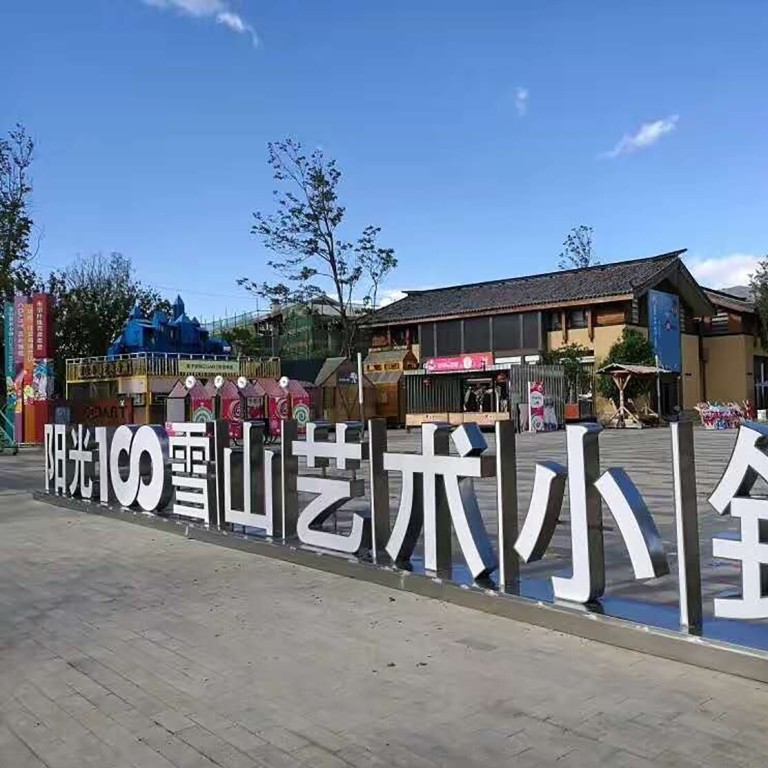
China cracks down on ‘characteristic towns’ that misused land, real estate while racking up massive debt
- An initiative to develop towns outside megacities was launched five years ago as part of China’s urbanisation push, but improper planning has plagued projects
- Latest move comes as Beijing is striving to reduce high local government debt and excess that collectively pose a serious threat to China’s economy
Across China, poorly planned ghost towns filled with unsold homes or faux-historic architecture – part of an initiative meant to boost tourism and local revenue – are facing elimination as Beijing puts them under the microscope.
Last month, the National Development and Reform Commission – the state planner – announced that these “characteristic towns” will be assessed and could be closed down if they fail to meet a set of criteria, including proper usage of land, preservation of the ecological environment, associated debt, necessity and safety.
“Excluding the existing traditional housing, residential land cannot take up more than 30 per cent of a characteristic town, and is encouraged to be less than 25 per cent,” the announcement said.
The initiative to develop characteristic towns outside megacities was launched five years ago as part of China’s urbanisation push. Some were built to support manufacturing, esports and e-commerce, but many others looked to tourism, with local authorities keen on selling land and developing real estate – a practice that has long sustained local governments.
“This development approach runs counter to the central government’s repeated warnings to not use the real estate market to stimulate economic growth,” said Andy Chen, senior analyst with Trivium China, a Beijing-based policy consultancy.
“Regulators have been tightening real estate developers’ financing channels through a series of policy measures and window guidance in the past two years. That’s why you see so many abandoned or suspended construction projects in these towns.”
Xueshan Art Town, located in the scenic city of Lijiang in Yunnan province, was built on land purchased from the local government for 163.5 million yuan in 2012, and the project pulled in 3.5 billion yuan worth of investment.
Chinese actor Li Yapeng was among those enticed by what looked to be a lucrative investment. He sank tens of millions of yuan into the town, which boasted picturesque views and quality architecture. But only about 30 private villas were sold in its first two years.
Li was forced to sell his land stake to another developer in 2015, and he reportedly still has 40 million yuan (US$6.25 million) worth of debt from the failed real estate project.
The new developer’s financial report showed that only 26 square metres of real estate were sold during the first half of 2020, accounting for less than a thousandth of the available space.
Many of these so-called characteristic towns have also been abandoned halfway through construction due to lack of funding, or they have faced bankruptcy due to a lack of visitors.
Hu Meilin, manager of Shenzhen OCT Culture Group, said during an interview with the National Business Daily that real estate companies jumped on the bandwagon to rapidly develop these characteristic towns, but none of them are particularly successful, and “basically 90 per cent of them were doomed to fail”.
These tourism-related real estate projects are normally based in rural areas and developed on a large scale, but sales are hard to come by due to a limited number of potential buyers
And those failures have largely boiled down to improper planning, according to Zhou Mingqi, founder of tourism consultancy Jingjian Consulting.
“These tourism-related real estate projects are normally based in rural areas and developed on a large scale, but sales are hard to come by due to a limited number of potential buyers,” he said. “The market positioning is problematic. A successful characteristic town or tourism real estate project requires matching facilities and industries. They must go hand in hand and form a complete industrial chain.
“Building houses is easy, as long as you have money. But industries can’t be produced mechanically. Rather, they come into being naturally and gradually.”
Over the years, analysts and authorities have warned of the risks that come with overly depending on housing sales to support and sustain these characteristic towns.
“In the end, there is excessive housing without attracting any businesses, which just increased housing inventory in vain,” says a housing development report by the Chinese Academy of Social Sciences that was widely circulated in 2018.
More recently, Beijing has stepped up its scrutiny of how local governments spend money, and has warned them to avoid raising debt for unviable projects. The nationwide real estate downturn has revealed the vulnerability of governments that heavily rely on land sales.
The percentage that land sales and real estate taxes contribute to local government fiscal revenue has been rising every year since 2015, and reached a peak of 37.6 per cent in 2020, according to public data.
Meanwhile, Beijing has shown no sign of abating in its push to curb local government debt.
Last week, the State Council, China’s cabinet, said it was monitoring local government projects as part of its debt-reduction plans.
“Governments at all levels need to tighten their belt and seriously manage their debt issues,” the council warned. “Every penny needs to be spent where it matters the most.”

